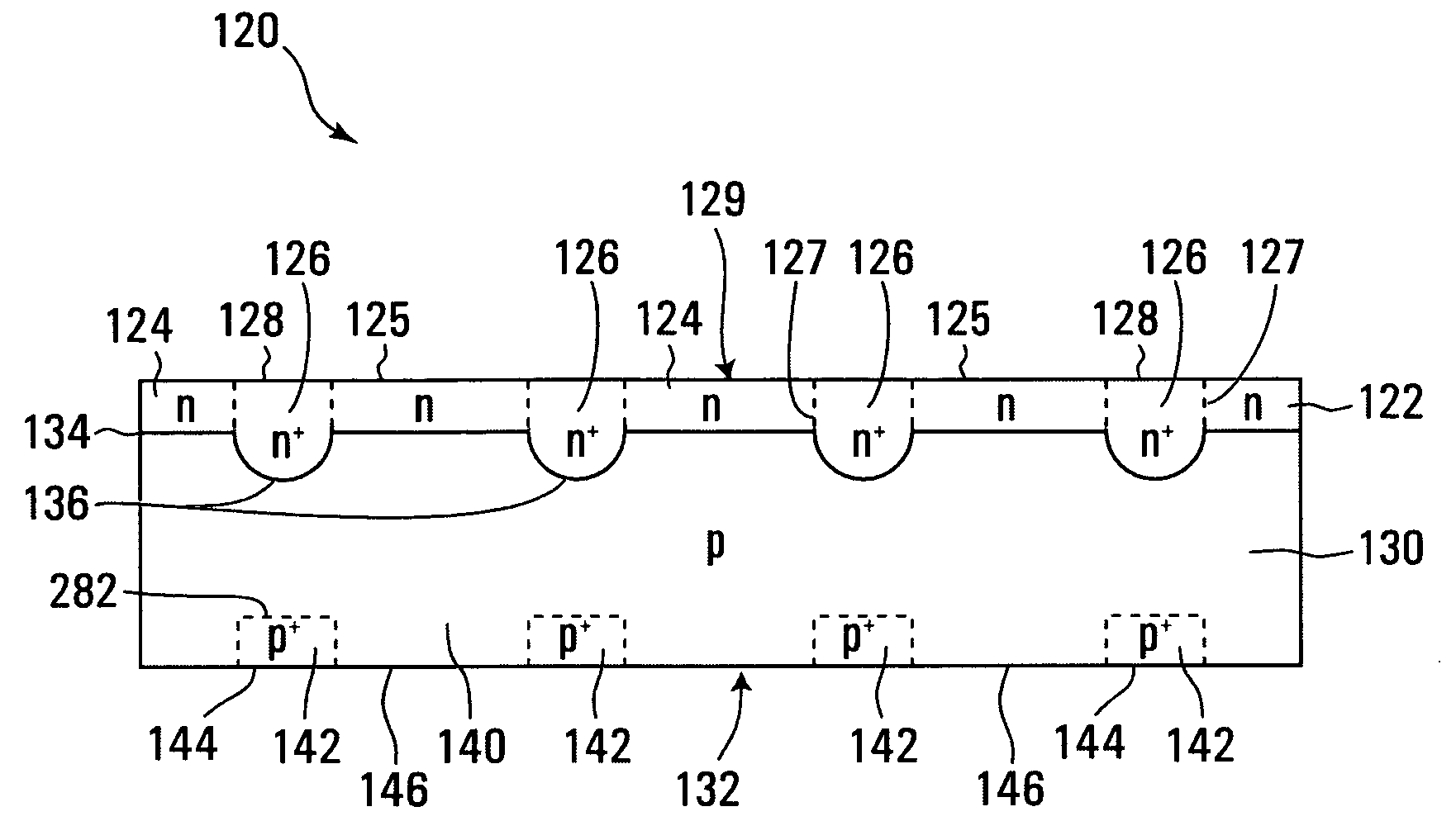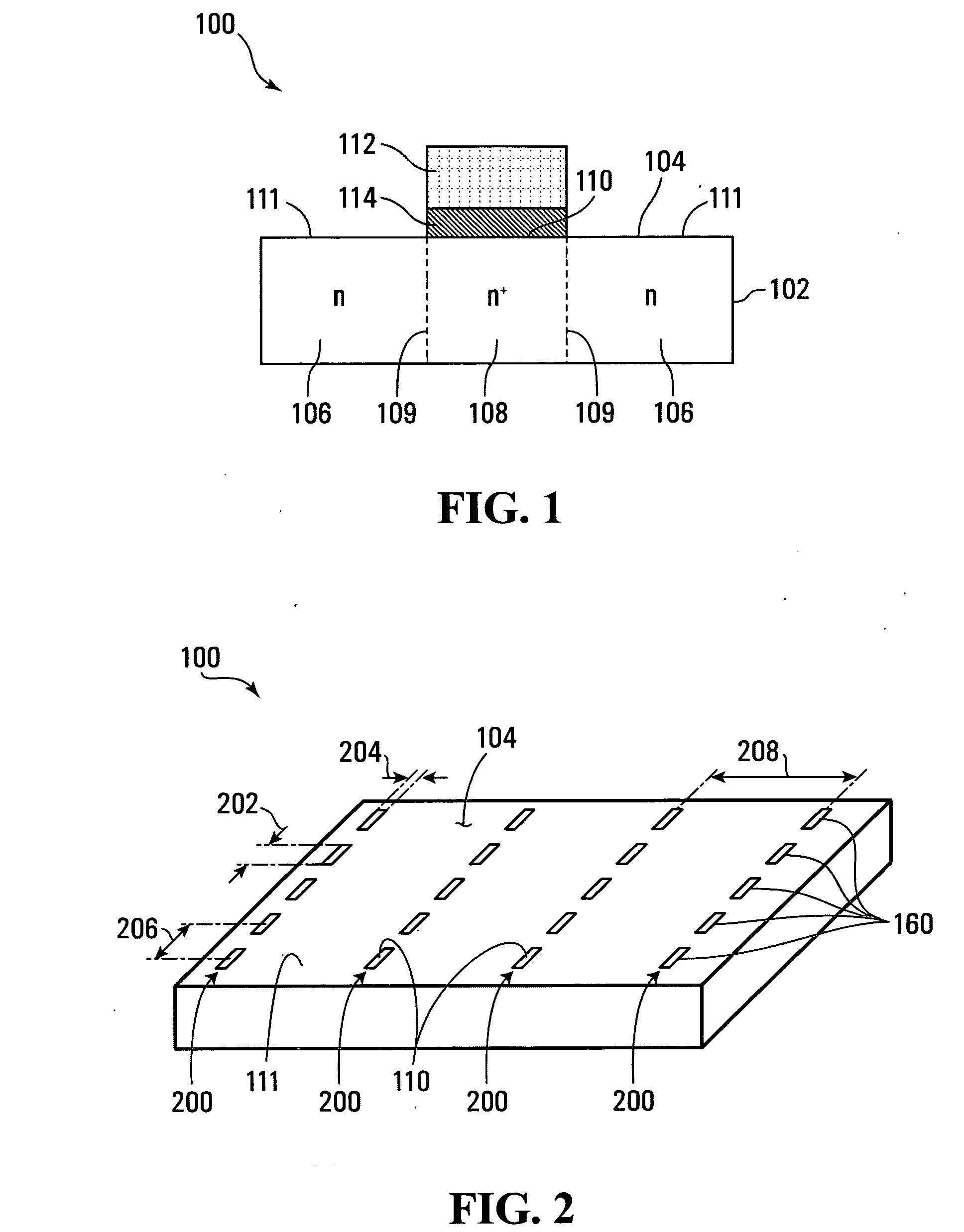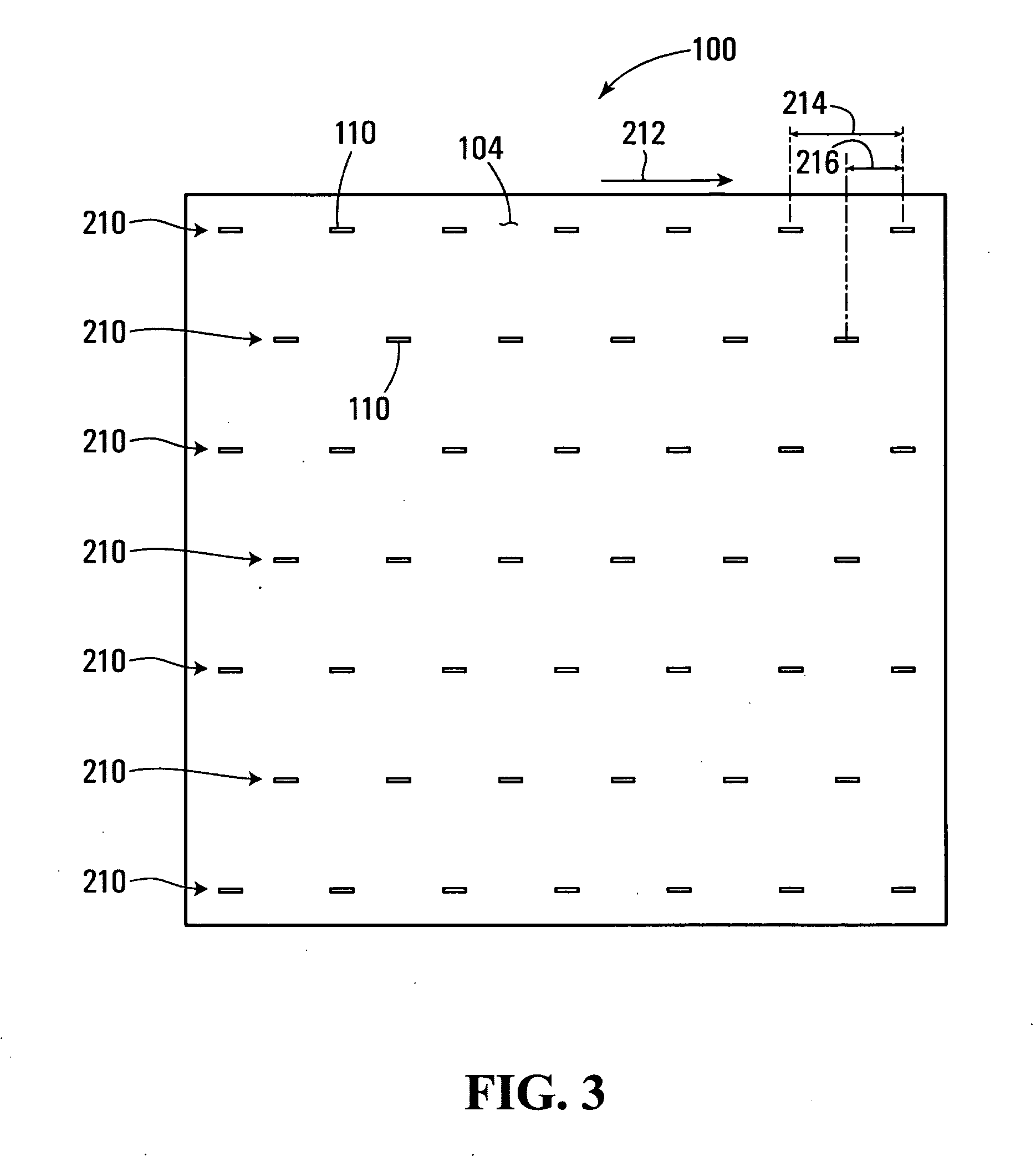Semiconductor structure and process for forming ohmic connections to a semiconductor structure
a semiconductor structure and semiconductor technology, applied in the field of semiconductor devices, can solve the problems of time and energy-consuming process, complicated and expensive implementation, etc., and achieve the effect of reducing the shading area of solar cells, and reducing the conversion efficiency of solar cells
- Summary
- Abstract
- Description
- Claims
- Application Information
AI Technical Summary
Benefits of technology
Problems solved by technology
Method used
Image
Examples
Embodiment Construction
[0112]Referring to FIG. 1, a semiconductor apparatus in accordance with a first embodiment of the invention is shown generally at 100. The semiconductor apparatus 100 includes a first doped volume 102 of semiconductor material, having a front surface 104. The first doped volume 102 includes a first region 106 having a first concentration of dopant and a first exposed area 111 on the front surface 104. The first concentration of dopant causes the first region 106 to have a first polarity type such as n-type, for example. The first doped volume 102 also includes a second region 108 adjacent the first region 106. The second region 108 has a second concentration of the same dopant used to dope the first region 106 and has a second exposed area 110 on the front surface 104. The concentration of dopant in the second region 108 is higher than the concentration of dopant in the first region 106 and causes the second region 108 to have the same polarity type as the first region. Where n-type...
PUM
 Login to View More
Login to View More Abstract
Description
Claims
Application Information
 Login to View More
Login to View More - R&D
- Intellectual Property
- Life Sciences
- Materials
- Tech Scout
- Unparalleled Data Quality
- Higher Quality Content
- 60% Fewer Hallucinations
Browse by: Latest US Patents, China's latest patents, Technical Efficacy Thesaurus, Application Domain, Technology Topic, Popular Technical Reports.
© 2025 PatSnap. All rights reserved.Legal|Privacy policy|Modern Slavery Act Transparency Statement|Sitemap|About US| Contact US: help@patsnap.com



